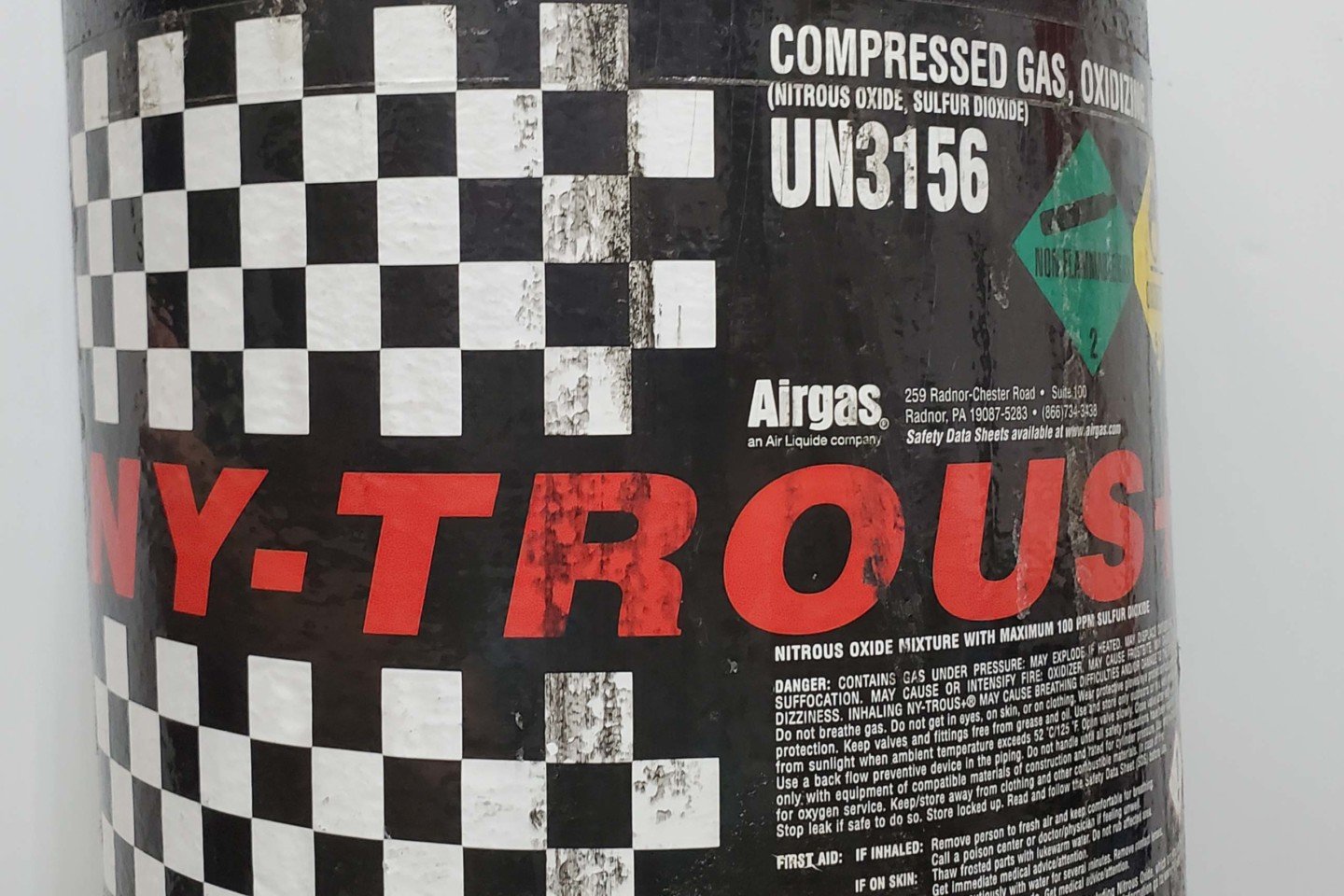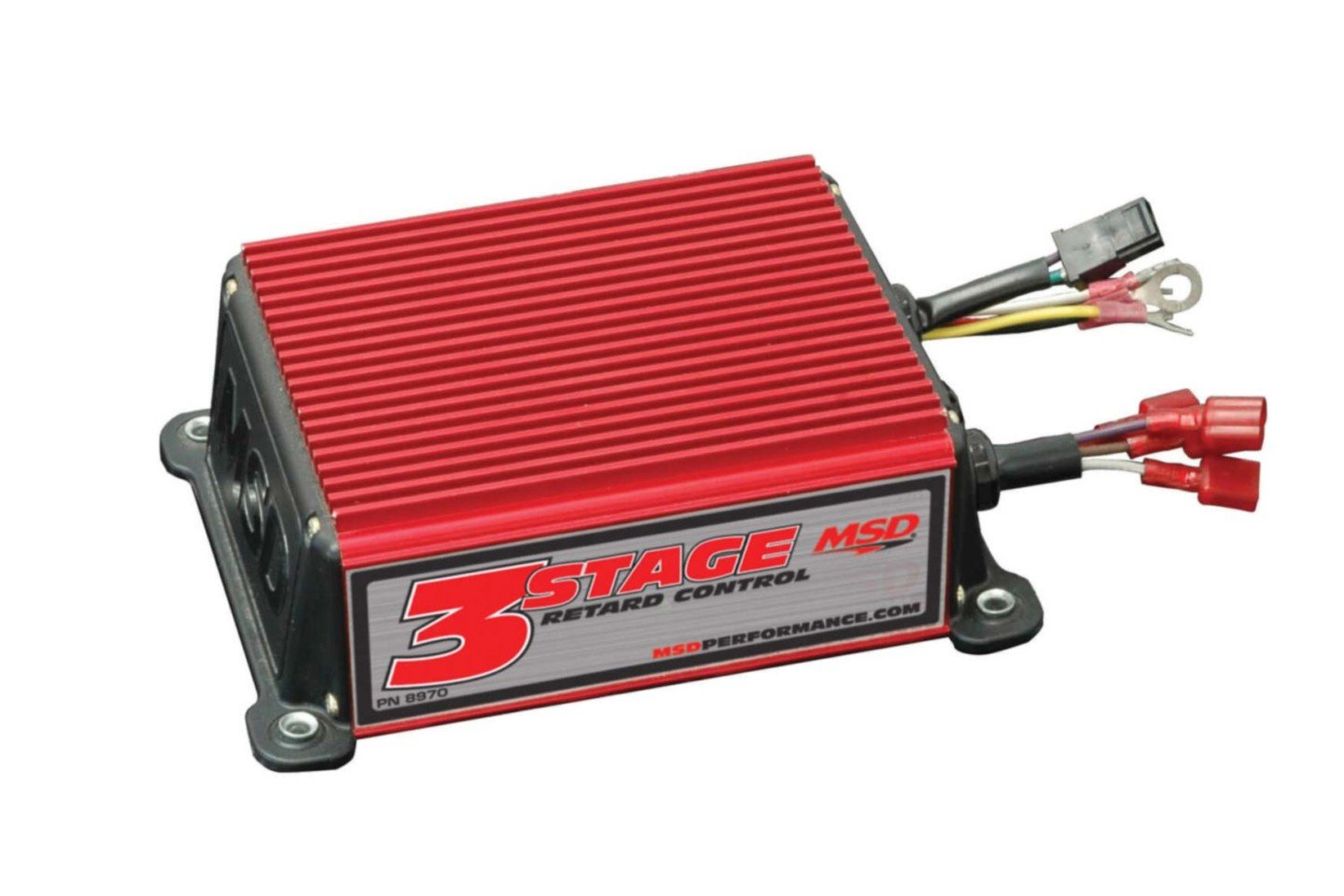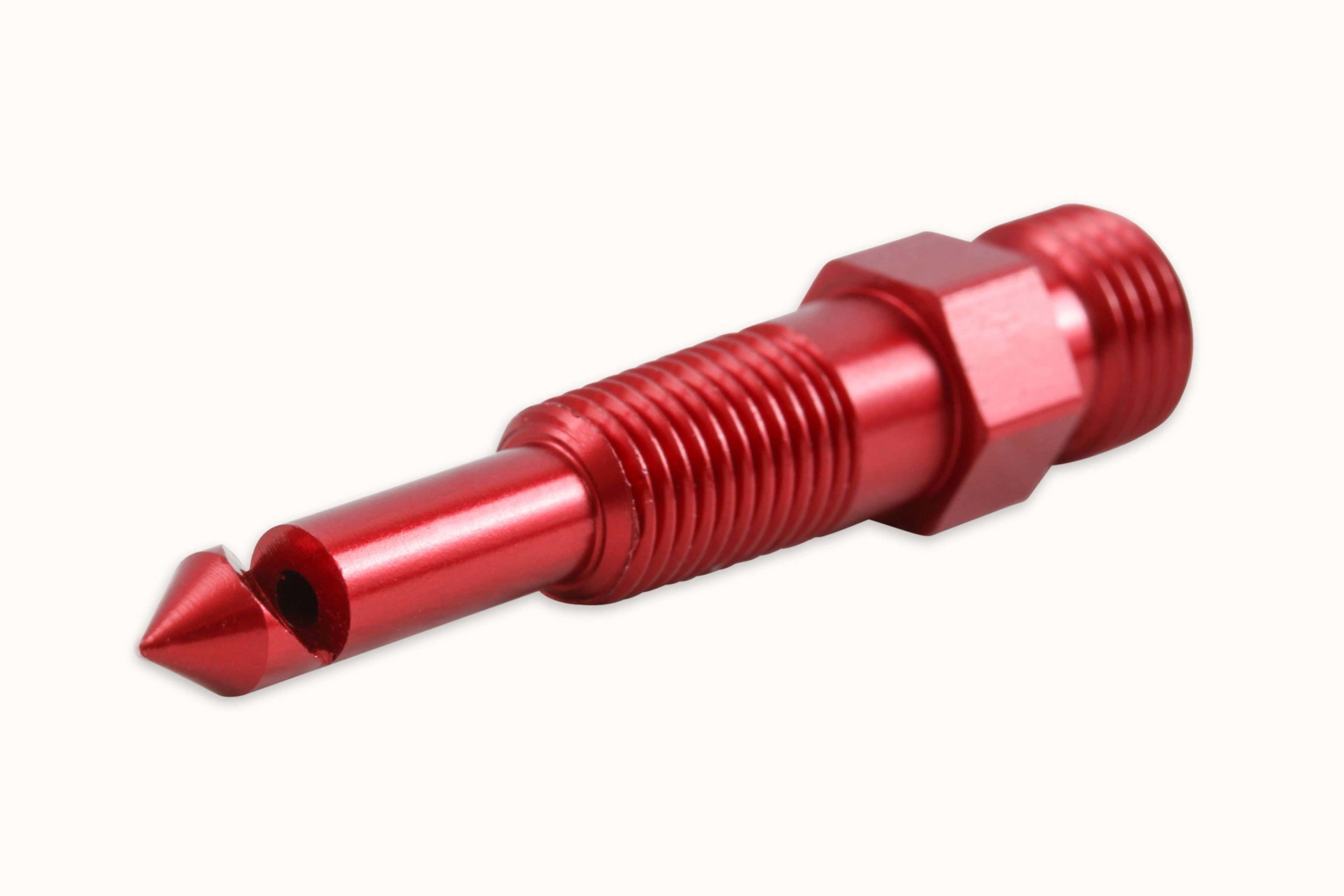Why is it that when people hear the term “Nitrous”, they automatically assume that there is going to be an explosion? Nitrous along with turbos and superchargers have been around for decades and are all a part of the “forced induction” family. You don’t ever hear things about turbos or superchargers in relation to massive explosions, but mention the word nitrous and people automatically picture their engine as the Nevada Atomic Test Range. Just for the record, there have many engine catastrophes with using all forms of forced induction.
Nitrous has always gotten a bad rap, but that’s partially due to the fact that it is the least understood power adder among the average gearhead. Nitrous is like anything else, it needs to be properly tuned. In order for it to be properly tuned, you have to get a basic understanding of what you are dealing with. If you purchase a nitrous kit today and follow the manufacturer’s installation instructions and tuning tips, there really shouldn’t be any problems.
That said, let’s go over some of the basics of a nitrous system and some tuning tips and maybe we can eliminate some of those frightening tales of “Nitrous engines gone bad”. This article will just scratch the surface, as you can dive deep into the world of nitrous oxide theory and hardware. This is just meant to help you get a basic understanding of a very misunderstood topic.

Nitrous Oxide (N2O) has both medical and industrial uses. The industrial-grade gas has 100ppm Sulphur Dioxide added to it to make it extremely unpleasant to inhale. While medical-grade Nitrous Oxide is pure, the minute amount of SO2 in industrial Nitrous doesn’t affect performance.
The Basics of N2O
First of all, let’s cover what Nitrous really is. Nitrous technically is called Nitrous Oxide. This is because the scientific abbreviation is N2O in which we are all familiar with. This means that there are two nitrogen atoms with one oxygen atom. People often associate this with the term “Laughing Gas” because it has been used as an anesthetic in the medical field.
There are generally two grades of Nitrous Oxide: medical grade and commercial grade. The medical-grade does have a higher purity rate for its intended purpose in the medical profession. The commercial-grade is what is used in our engines. The biggest difference between the two is that the commercial-grade is “tainted” with 100 parts-per-million of Sulfur Dioxide, which gives it somewhat of a foul odor. This was done intentionally to prevent improper use of the gas via inhalation.
Nitrous Oxide does not occur naturally, it has to be manufactured. It is stored in a pressurized tank in liquid form at room temperature. When it is released into the atmosphere at ambient temperature it becomes a gas in a very endothermic phase change (it gets to -127 °F as it turns into a gas). Regardless of what you might hear or see in the movies, Nitrous Oxide is not flammable and it will not burn.

While Nitrous tanks are usually made out of aluminum, most companies offer modern lightweight tank options, like these carbon-fiber bottles from Nitrous Supply. They have to meet the same 1,800 psi minimum rating and have all the same safety features as the traditional bottles, at a lighter weight.
That being said, Nitrous tanks have to be regularly certified to be able to withstand 1,800 psi. An additional safety feature, most Nitrous bottles are outfitted with what is known as a safety release disc which is made of copper or brass. If the bottle’s pressure were to rise above the 1,800 psi mark, the safety disc is supposed to blow out and release the pressure in a more controlled manner to keep the tank from rupturing. Generally, Nitrous bottles are targeted for 850-1,000 psi working range, so the 1,800 psi rating allows for a significant safety margin.
While the safety disc is a simple and effective means of protection, it does release all of the contents of the bottle once it is “released” and can be hazardous in and of itself, which is why any sanctioning body will require the safety valve to vent to the outside of the vehicle. There are also various manufacturers of different styles of safety valves that will only vent small amounts of Nitrous without dumping the whole tank. Nitrous tank pressure for a Nitrous Oxide system is very important for proper operation.
The Chemistry of Horsepower
To be able to safely use Nitrous, we need to understand what happens when it’s injected into an engine. There are two methods of injecting Nitrous, known as wet and dry. In a wet setup, additional fuel is injected into the engine along with the Nitrous. In a dry system, it’s just the nitrous that’s injected into the system, relying on the engine’s existing fuel delivery system to enrich the mixture. Either way, nitrous requires additional fuel to make more horsepower.
So, if Nitrous isn’t flammable, how does it make that power? Nitrous is a chemical compound known as an Oxidizer that releases oxygen when reacting with another substance. With its chemical makeup, each molecule of Nitrous Oxide brings with it an oxygen atom. Additional oxygen allows more fuel to be burned. More fuel burned means more horsepower. Additionally, remember how we mentioned the cooling effect when it transitions from a liquid into a gas? That radically decreases the intake charge temperature making for a more dense intake charge. The increased charge density with the additional oxygen and fuel is what makes power.

As you can see here, Nitrous isn’t flammable. Instead, it’s an oxidizer, which means it will provide additional oxygen to another chemical reaction. By adding oxygen to the combustion process, Nitrous Oxide allows more fuel to be burned in the combustion process, and more power to be made.
The ratio of Nitrous to additional fuel is the key to making safe horsepower. You’ll often hear people referring to jet sizes in a two or three-digit number. That is the orifice size, in thousandths of an inch, of the flow-restrictor in the line. In a wet kit, there will be a similar jet on the supplemental fuel line. By altering the size of the nitrous jet, more or less horsepower can be added. You then fine-tune the air-fuel ratio with the fuel jet size.
Applying Nitrous Oxide Safely
Where things go bad when using Nitrous, is often with the ignition timing. To really understand how to make power with Nitrous, we need to understand proper ignition timing with the increased rate of fuel burn along with expansion and cylinder pressure. No matter what, the ignition timing has to be changed when using nitrous to prevent engine damage.
So far, we have discussed that additional oxygen along with additional fuel increases the burn rate during combustion. The accelerated burn rate itself does not increase horsepower. The accelerated burn rate however does create a rise in heat, which in turn creates more cylinder pressure. That additional cylinder pressure is what creates power. Controlling the peak cylinder pressure of the combustion event is the key to making maximum power. Peak combustion pressure is achieved when the air/fuel mixture is ignited right before it reaches peak cylinder pressure (from piston compression) in the chamber.
Here you can see various methods of Nitrous injection. On the far left is a dry nozzle. This nozzle only injects Nitrous Oxide (which has been metered by a jet of a specific orifice size) and relies on the engine's fuel system to add fuel. In the middle is a wet nozzle. It injects both Nitrous and fuel (both through metered jets) at the same time. On the right is a wet plate. Designed to sit below a carburetor, this system uses spraybars to distribute both Nitrous and fuel into the intake manifold.
A nitrous engine creates more cylinder pressure so the need for ignition advance is reduced. The rule of thumb for retarding the ignition timing is 1 degree for every 25 horsepower of Nitrous. For example, an engine running 36-degrees of total timing naturally aspirated, would retard the timing by 6 degrees, to 30 degrees total, when using a 150-horsepower shot of Nitrous Oxide.
Regardless of whether the engine is naturally aspirated or force-fed, knowing the correct timing for peak cylinder pressure equals power. The best way to find out if your engine is timed correctly is to read the spark plug. The ignition timing is responsible for heat marks on the ground strap of the spark plug. If the flame front is initiated too soon, more temperature is created before the exhaust valve opens which creates bluing on the ground strap above the base of the plug threads. If the timing is initiated too late then the bluing occurs on the tip of the ground strap. When the timing is right, the bluing will occur about middleways up the ground strap from the center of the tip of the electrode.

The rule of thumb for ground strap discoloration is, if it appears more toward the electrode then there is not enough timing and if the ground strap is discolored toward the threads of the spark plug there is too much timing. Somewhere along the middle like in the photo is in the ballpark of what you are looking for. Also, keep an eye on the base of the porcelain for some discoloration.
There is usually a hydrocarbon ring that will form on the porcelain about .150-inch up from the base of the plug threads. If the hydrocarbon shadow is black or dark gray, then the mixture may be too rich or the plug might be too “cold”. The heat range of the spark plug refers to the temperature electrode, controlled by the size and shape of the electrode’s ceramic insulator.
Since a spark plug must maintain a certain temperature in order to keep itself clean, the heat range of the spark plug must be selected for the operating environment it is going to be running in. When using small amounts of nitrous you can generally use one step colder than your current spark plug. If you are using big amounts of nitrous you may need to drop three or four steps colder on the spark plug heat range.

One thing to keep in mind is that you’ll need to retard your timing when using Nitrous. The rule of thumb is one degree for every 25 horsepower worth of nitrous you’re injecting.
Getting Into Nitrous Oxide-Specific Modifications
For the most part (and really, what we’re discussing here) small Nitrous systems are often used on factory-based engines. They perform well and often don’t require any major engine modifications other than a reduction in timing and colder plugs. But, if you were to build a Nitrous-based engine or introduce a lot of Nitrous into your existing engine, there are a number of areas to be considered.
Most camshaft manufacturers have a lot of experience with Nitrous Oxide and often offer various “off-the-shelf” solutions for many applications. We recently discussed what goes into a Nitrous Oxide-specific camshaft design in this article here, and explain in detail how and why a “Nitrous cam” is different than a naturally aspirated camshaft.

If you are building a Nitrous specific engine or wanting to add a significant amount of Nitrous, you may want to upgrade the camshaft. Several manufacturers such as Comp Cams offer camshafts for Nitrous use. These cams are ground with wider lobe separations and longer exhaust duration to help scavenge some of the spent exhaust gasses from the cylinders.
Additionally, the same modifications you’d make to an engine for copious amounts of boost would be similarly recommended for heavy Nitrous use. After all, just like the other forms of forced induction, you are greatly increasing cylinder pressure and subsequently, horsepower. So beefing up your engine’s internal components would be a wise idea for anything beyond mild use of the giggle gas.
Nitrous Oxide, when used per the manufacturer’s instructions, is an incredibly cost-effective power adder. With a minimum outlay of cash, and relatively simple installation significant power increases can be had on a relatively stock engine. Additionally, if you want to go wild with the stuff, you can do that as well. The key is to understand what’s happening and make sure you are accounting for all the variables.




















